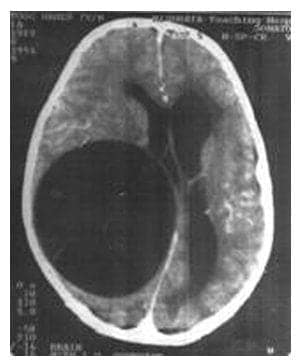Funtabulously Frivolous Friday Five 286
Just when you thought your brain could unwind on a Friday, you realise that it would rather be challenged with some good old fashioned medical trivia FFFF, introducing the Funtabulously Frivolous Friday Five 286
Question 1
What’s the connection between pyloric stenosis, ultrasound and pi?
Reveal the funtabulous answer
Although criteria vary from publication to publication an easy way to remember the ultrasound criteria for hypertrophic pyloric stenosis involves remembering the first numbers of pi:
π = 3.1415
- Pyloric muscle thickness, i.e. diameter of a single muscular wall on a transverse image >3 mm (most accurate)
- Pyloric transverse diameter ≥14 mm
- Length, i.e. longitudinal measurement >15 mm
Reference: Radiopedia (Hypertrophic pyloric stenosis)
Question 2
What metabolic disease was once treated with a bituminous medication containing silica and benoates from the Himalayas?
Reveal the funtabulous answer
Diabetes Mellitus
Diabetes mellitus has been known by physicians for nearly 3,500 years in ancient Egypt. The papyrus contains descriptions of various diseases, among them is a polyuric syndrome, presumably diabetes. The Egyptians suggested various remedies to this syndrome including a decoction of bowes, wheat and earth.
Kumar et al 2013
The Verdic medical treatises from ancient India described, in detail, diabetes like conditions of 2 types: Congenital and late onset and the Indians noticed the relation of diabetes to heredity, obesity, sedentary life and diet. They suggested the freshly harvested cereals and bituminous preparations containing benzoates and silica as a remedy for diabetes.
Reference:
- Kumar PA. Diabetes – A historical Review. J. of Drug delivery & Therapeutics. 2013;3(1):83-84
Question 3
What did the people of the Spanish province of Aragon eat which gave them tremors, severe agitation and palpitations in 1991?
Reveal the funtabulous answer
Cinnamon.
The cinnamon had been contaminated with clenbuterol. [PDF]
Clenbuterol is classed as a ‘beta-2 agonist’ and its short-term effects are similar to stimulant drugs like amphetamine or ephedrine (i.e. increases heart rate, temperature, perspiration and blood pressure).
Question 4
What parasite was the cause of the space occupying lesion in the brain of mummy 22940 in the Manchester Museum Mummy Collection?
Reveal the funtabulous answer
Hydatid disease (cerebral echinococcosis)
Echinococcosis is a parasitic disease caused by infection with tiny tapeworms of the genus Echinocococcus. Echinococcosis is classified as either cystic echinococcosis or alveolar echinococcosis.
Cystic echinococcosis (CE), also known as hydatid disease, is caused by infection with the larval stage of Echinococcus granulosus, a ~2-7 millimeter long tapeworm found in dogs (definitive host) and sheep, cattle, goats, and pigs (intermediate hosts). Although most infections in humans are asymptomatic, CE causes harmful, slowly enlarging cysts in the liver, lungs, and other organs including the brain and can often grow unnoticed and neglected for years.
Alveolar echinococcosis (AE) disease is caused by infection with the larval stage of Echinococcus multilocularis, a ~1-4 millimeter long tapeworm found in foxes, coyotes, and dogs (definitive hosts). Small rodents are intermediate hosts for E. multilocularis. Although cases of AE in animals in endemic areas are relatively common, human cases are rare. AE poses a much greater health threat to people than CE, causing parasitic tumors that can form in the liver, lungs, brain, and other organs. If left untreated, AE can be fatal.
Persons with cystic echinococcosis often remain asymptomatic until hydatid cysts containing the larval parasites grow large enough to cause discomfort, pain, nausea, and vomiting. The cysts grow over the course of several years before reaching maturity and the rate at which symptoms appear typically depends on the location of the cyst. Cyst rupture is most frequently caused by trauma and may cause mild to severe anaphylactic reactions, even death, as a result of the release of cystic fluid.
Reference: CDC – Echinococcosis
Question 5
What was the Lowenstein splint?
Reveal the funtabulous answer
An external penile splint designed to allow ‘intromission’ of a flaccid penis in cases of impotence (developed in 1947 by Joseph Lowenstein).

Treatments for Erectile dysfunction (ED) date back to as early as the eighth century, when men of Ancient Rome and Greece wore talismans of rooster and goat genitalia. Romans would consume the genitalia of animals with high libidos, such as rabbits, and drink the semen of hawks and eagles (Taberner, 1985).
In the 19th century, with the realization of testosterone’s role in erectile function, French neurologist Dr. Charles Edouard Brown-Séquard began injecting himself with extract from the testicles of dogs and guinea pigs (Brown-Séquard, 1889). This progressed to Russian surgeon Dr. Serge Voronoff performing testicular graft transplantations from apes into human testes (Voronoff, 1925). While these were unsuccessful at increasing testosterone levels, the transplantations were a step toward the artificial synthesis of testosterone from cholesterol by Adolf Butenandt in 1935. Butenandt was ultimately awarded the Nobel Prize, shared with Leopold Ruzica, for this work in 1939 (Payne, 2004.)
In 1998, Pfizer (New York, NY) introduced the first effective Food and Drug Administration–approved oral treatment for ED, sildenafil.
Alongside hormonal therapies there are was also a market from 1936 for penile implants from rib cartilage and bone to later silicone, inflatable penile implants and splints like the one shown above. For a deeper dive see our reference:
- K. Gunter et al. Erectile Dysfunction: A Review of Historical Treatments With a Focus on the Development of the Inflatable Penis Prothesis. Am J Mens Health 2017;11(3):479-486
…and finally

FFFF
Funtabulously Frivolous Friday Five
Dr Neil Long BMBS FACEM FRCEM FRCPC. Emergency Physician at Kelowna hospital, British Columbia. Loves the misery of alpine climbing and working in austere environments (namely tertiary trauma centres). Supporter of FOAMed, lifelong education and trying to find that elusive peak performance.

